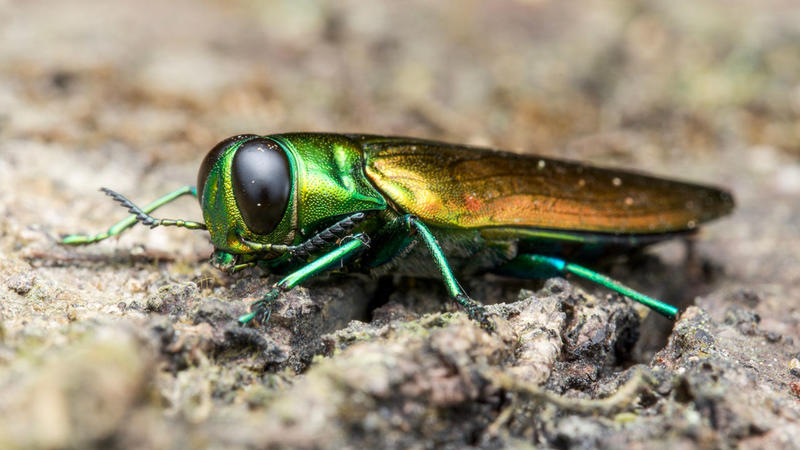At one point in the Earth's history, it is theorized with great certainty that all the continents amassed into one mega continent known as Pangea, a mega continent. This is the reason why archaeologists and paleontologists will find fossilized bones from animals who wouldn't otherwise exist on the same continent.

At some point, all the continents spread due to plate tectonic activity. This didn't happen overnight though. This happened over the course of the Earth's long history. Now, our continents are separated, making the endemic life of each vastly different from each other. Of course, this causes some problems.
Since our continents are so different in climate, terrain, and animal life, not everything can exist across all continents, and in some cases with insects, they might be balanced on one continent, but completely ravage another. That's why scientists have started planting sentinel trees on different continents.
Bugs aren't the most popular creature in the world. Even one fly in your home can cause such a disruption that it ruins your entire day. What is even worse with insects is when one is taken from one country and incorrectly brought to another. What this causes is the new insect to spread and cause chaos since the environment isn't equipped to handle the new insect. One example is an Asian beetle known as the emerald ash borer. When introduced to North America in 2002, it has caused over 10 billion dollars in damage and destroyed millions of ash trees.

Scientists have an idea on what they can do to help alleviate these types of issues. Researchers from Europe, China, and the United states have come up with the idea to plant sentinel trees.
Sentinel trees are trees from one region that are planted in another region so that researchers can observe what the insect life does to that tree. For example, if an ash tree was planted in Asia, researchers would be able to see that it was quickly eaten up by the emerald beetle. According to Jirri Hulcr, an entomologist at the University of Florida, Sentinel trees are “the new frontier” in fighting bugs that threaten plant life. It is a concern that can easily be overlooked, but is very important.

Trees from North America and Europe have been planted in groves in China. This has led to dozens of different species of insects to be studied. There are currently sentinel trees in North America, Asia, and South Africa, and soon the United States is hoping to grow a sentinel grove from Asia.
There are many challenges involved with the plan to use sentinel trees. For one, it takes time - years and even decades. Young trees aren't necessarily a great testing barometer since many insects only attack mature trees. It is also true that trees don't thrive as well outside of their usual region, so this could cause them to be more susceptible to attacks.

There are also the legal issues involved, such as how to take their findings and actually apply them to laws and actions that would prevent bringing certain insects into different regions. As one scientist put it, “science and regulation are disjoint[ed] a lot of times.” As we have seen throughout history, scientific knowledge doesn't always translate to reasonable action. At the end of the day, what can you do to stop a tiny bug from jumping on a shipping crate?